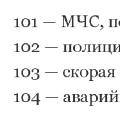As you know, the first photographs in the Russian Empire were taken back in October 1839, and already in 1840 the first photo studio opened in Moscow. Fortunately, the metal plates of daguerreotypes are quite well preserved, and many of the portraits were printed before the originals disappeared without a trace. Thanks to this, we can see the faces of our compatriots who lived (!) 170-150 years ago. Today we will look at some celebrities.
Gogol surrounded by representatives of the Russian community of Rome, 1845, photo by Levitsky:
Another version of the same reproduction: 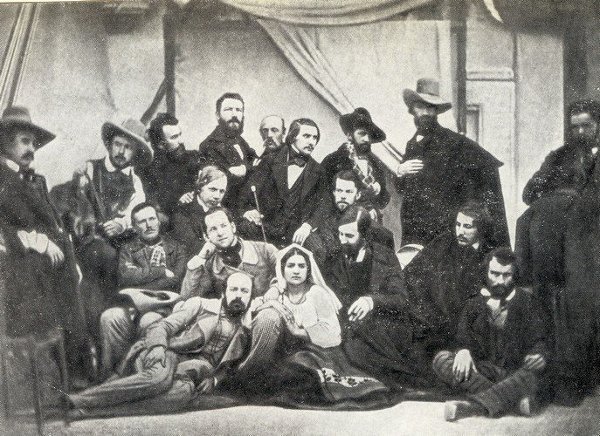
And here is a close-up portrait of Gogol, also during his life in Rome, 1845:
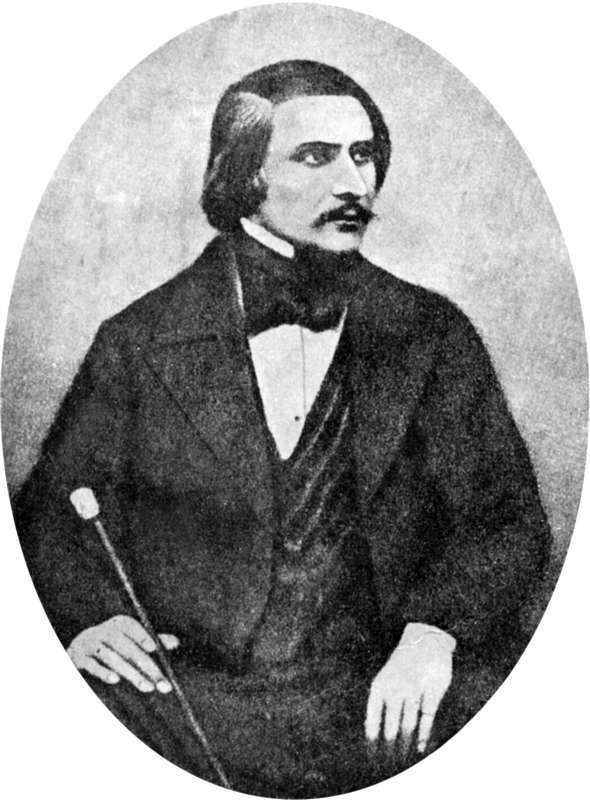
This is an excerpt from a group portrait, which indicates the good resolution of the original.
Lermontov could also theoretically have time to take a photo, but, alas...
In 1845, the Frenchman A. Davignon went on his first photographic trip to Russia. In Irkutsk he captured the Decembrists. For some reason, the authorities didn’t like this, they arrested the photographer and confiscated the records, as if they were even going to destroy them. But apparently not everything was destroyed.
Decembrist Panov Nikolai Alekseevich, 1803-1850. Daguerreotype by A. Davignon Irkutsk, 1845: 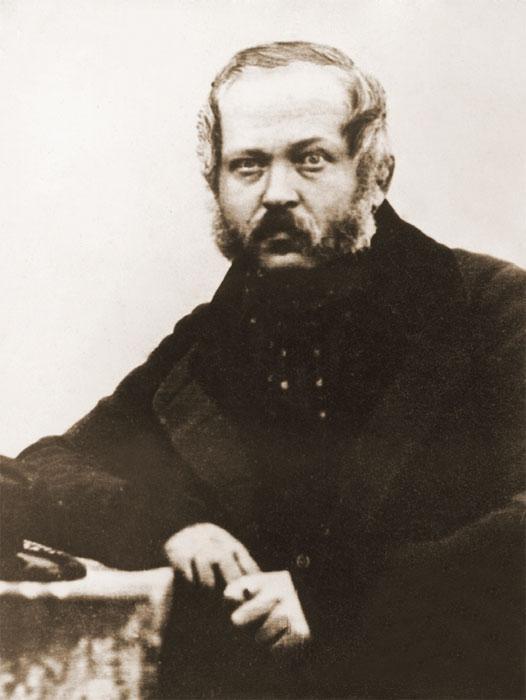
Decembrist S.G. Volkonsky. Daguerreotype by A. Davignon Irkutsk, 1845: 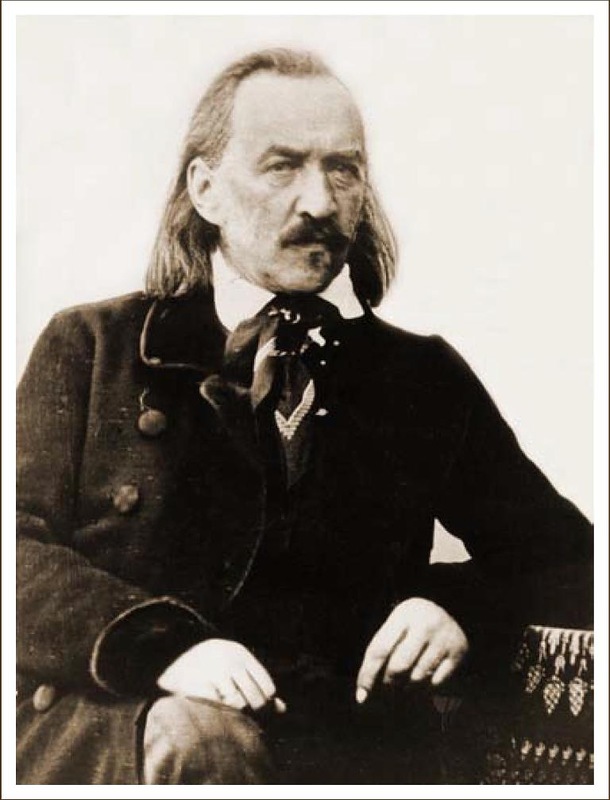
As we see, the shackles had already been removed from them by that time, but Tsar Nicholas I never allowed the former rebels to return to St. Petersburg.
Variant of the portrait of S.G. Volkonsky: 
Learned? Leo Tolstoy in 1848, very young: 
Looking at this face, for some reason you believe the confession of this “seasoned man”, made in old age: “there is no crime that I did not commit in my youth.”
Young Turgenev in Bisson's photo, between 1841 and 1855: 
Russian religious philosopher, literary critic and publicist, one of the main theorists of Slavophilism I.V. Kireevsky (1806-1856), photo from the 1840s: 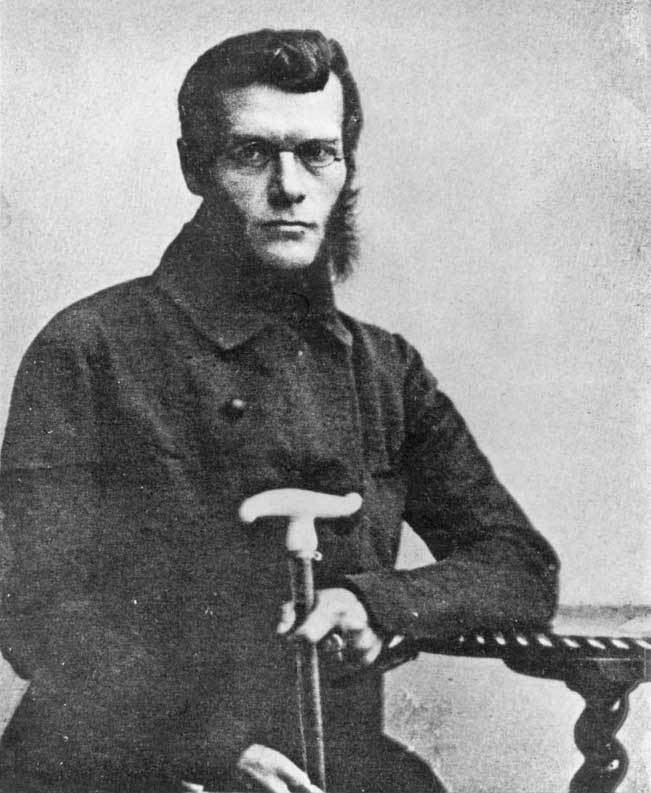
The founder of all Russian liberal oppositionists Alexander Herzen in 1851: 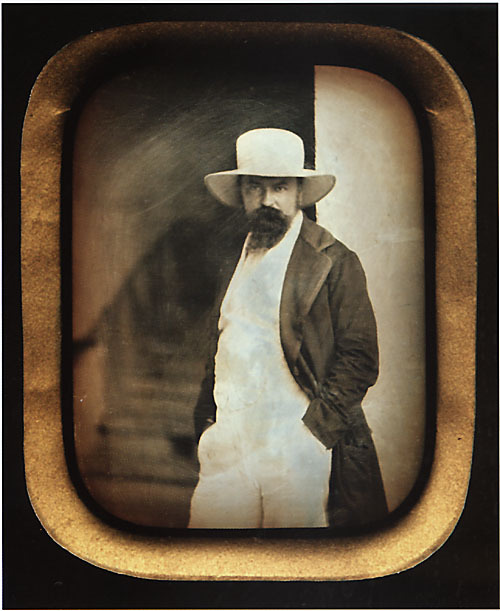
P.A. Vyazemsky in Levitsky’s photo: 
F.I. Tyutchev in Levitsky’s photo, 1860-61: 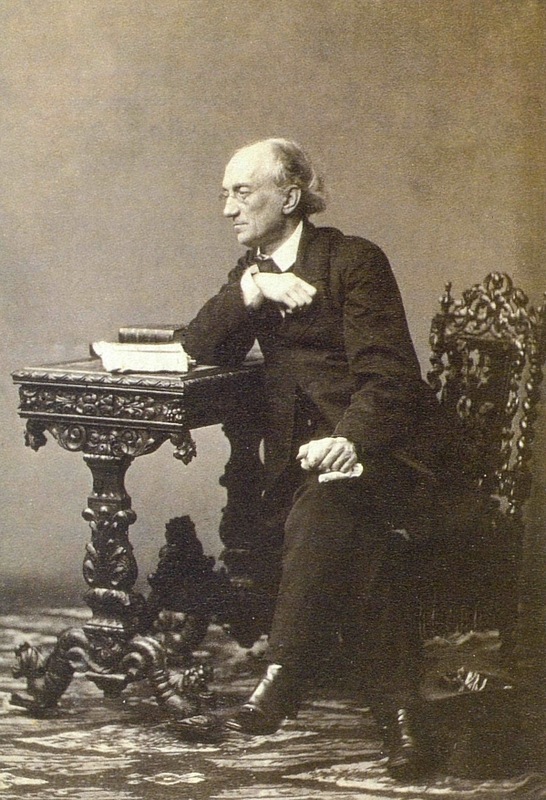
The young Mendeleev looks almost like the old one in Levitsky’s 1861 photo: 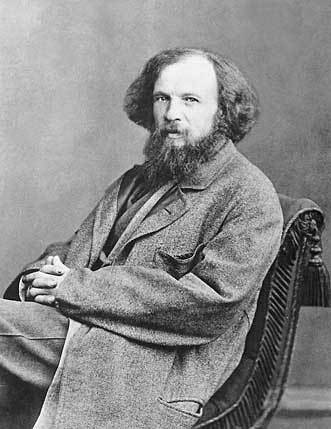
If anyone knows any other similar portraits from the same period, please send me a link.
Branitskaya, born Engelhardt, Alexandra Vasilievna (1754-1838) - niece and mistress of Grigory Potemkin, wife of the Crown Hetman of Poland Xavier Branicki. Artist I. Grassi, 1793
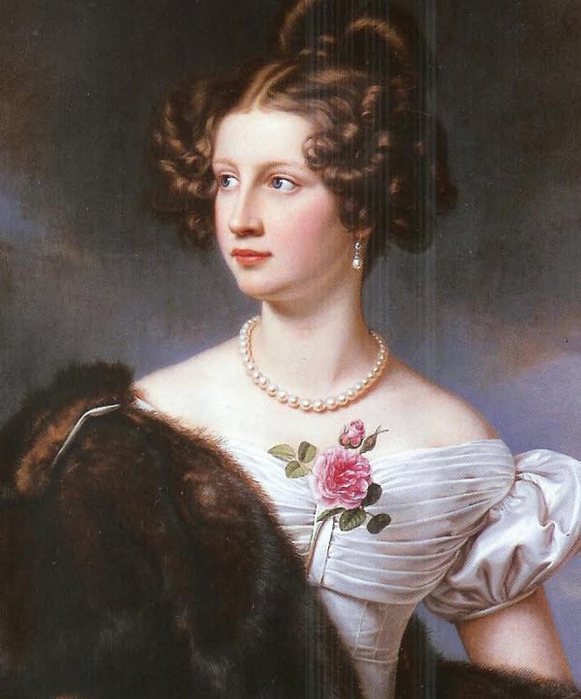 Kridener, born Lerchenfeld, Amalia Maximilianovna (1808-1888) - illegitimate daughter of M. Lerchenfeld, a German diplomat and statesman, Bavarian envoy to Russia and Princess Therese of Thurn and Taxis, née Princess of Mecklenburg-Strelitz.
Kridener, born Lerchenfeld, Amalia Maximilianovna (1808-1888) - illegitimate daughter of M. Lerchenfeld, a German diplomat and statesman, Bavarian envoy to Russia and Princess Therese of Thurn and Taxis, née Princess of Mecklenburg-Strelitz.
Artist Karl Joseph Stieler, 1827
 Pototskaya, Olga Stanislavovna, by her husband Naryshkina (1802-1861) - daughter of the Polish magnate Stanislav Szczesny Potocki and the famous adventuress Sofia Glyavone.
Pototskaya, Olga Stanislavovna, by her husband Naryshkina (1802-1861) - daughter of the Polish magnate Stanislav Szczesny Potocki and the famous adventuress Sofia Glyavone.
Artist N.S. Froste, 1830s
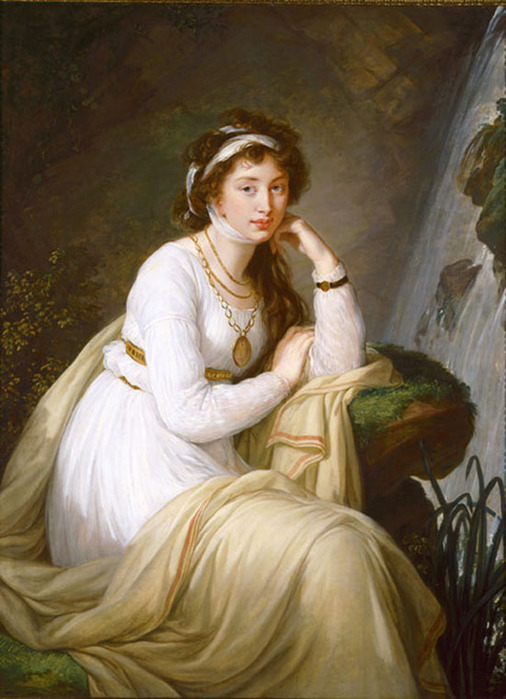 Tolstaya, nee Princess Baryatinskaya, Anna Ivanovna (1772-1825) - sister of the actual chamberlain of Prince I.I. Baryatinsky, wife of the marshal N.A. Tolstoy; close friend of Empress Elizabeth Alekseevna.
Tolstaya, nee Princess Baryatinskaya, Anna Ivanovna (1772-1825) - sister of the actual chamberlain of Prince I.I. Baryatinsky, wife of the marshal N.A. Tolstoy; close friend of Empress Elizabeth Alekseevna.
Portrait by E. Vigée-Lebrun, 1790s
 Vorontsova, born. Senyavina, Ekaterina Alekseevna (1761-1784) - maid of honor, daughter of Admiral A.N. Senyavin; wife of the Ambassador in London, Count S.R. Vorontsov; mother of Field Marshal Count M.S. Vorontsov; sister of state lady M.A. Naryshkina.
Vorontsova, born. Senyavina, Ekaterina Alekseevna (1761-1784) - maid of honor, daughter of Admiral A.N. Senyavin; wife of the Ambassador in London, Count S.R. Vorontsov; mother of Field Marshal Count M.S. Vorontsov; sister of state lady M.A. Naryshkina.
Artist D.G.Levitsky, 1783
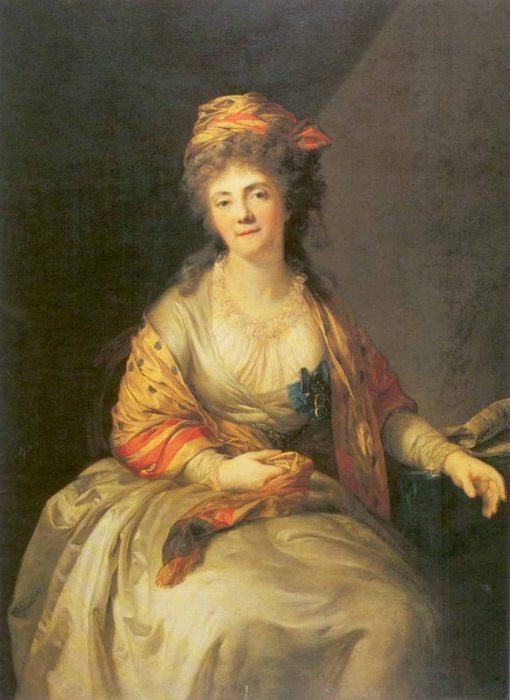 Divova, born Countess Buturlina, Elizaveta Petrovna (1762-1813) - maid of honor of Catherine II, niece of her friend Vorontsova-Dashkova, wife of Privy Councilor Adrian Divov.
Divova, born Countess Buturlina, Elizaveta Petrovna (1762-1813) - maid of honor of Catherine II, niece of her friend Vorontsova-Dashkova, wife of Privy Councilor Adrian Divov.
Portrait by A. Graf, 1794
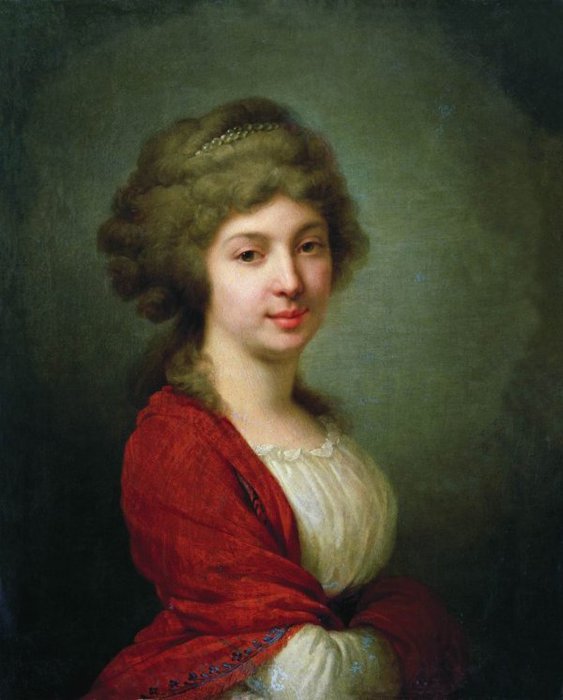 Zavadovskaya, born Apraksina, Vera Nikolaevna (1768-1845) - maid of honor, cavalry lady of the Order of St. Catherine of the Lesser Cross, one of the first beauties of her time; wife of Catherine II's favorite and the first Minister of Education of Russia, Count P.V. Zavadovsky.
Zavadovskaya, born Apraksina, Vera Nikolaevna (1768-1845) - maid of honor, cavalry lady of the Order of St. Catherine of the Lesser Cross, one of the first beauties of her time; wife of Catherine II's favorite and the first Minister of Education of Russia, Count P.V. Zavadovsky.
Artist V.L. Borovikovsky, 1790s
 Lopukhina, born. Baroness von Wenkstern, Anna (Jeanetta) Ivanovna (1786-1869) - famous beauty, Countess Alopeus in her first marriage; mother of Lieutenant General F.D. Alopeus.
Lopukhina, born. Baroness von Wenkstern, Anna (Jeanetta) Ivanovna (1786-1869) - famous beauty, Countess Alopeus in her first marriage; mother of Lieutenant General F.D. Alopeus.
Artist Friedrich Johann Gottlieb Lieder, 1821
 Musina-Pushkina, born. Shernvall, Emilia Karlovna (1810-1846) - a famous beauty (Lermontov's madrigal is dedicated to her), a friend of A.S. Pushkin, sister of the famous Aurora Demidova.
Musina-Pushkina, born. Shernvall, Emilia Karlovna (1810-1846) - a famous beauty (Lermontov's madrigal is dedicated to her), a friend of A.S. Pushkin, sister of the famous Aurora Demidova.
Artist Gau V.I., 1840
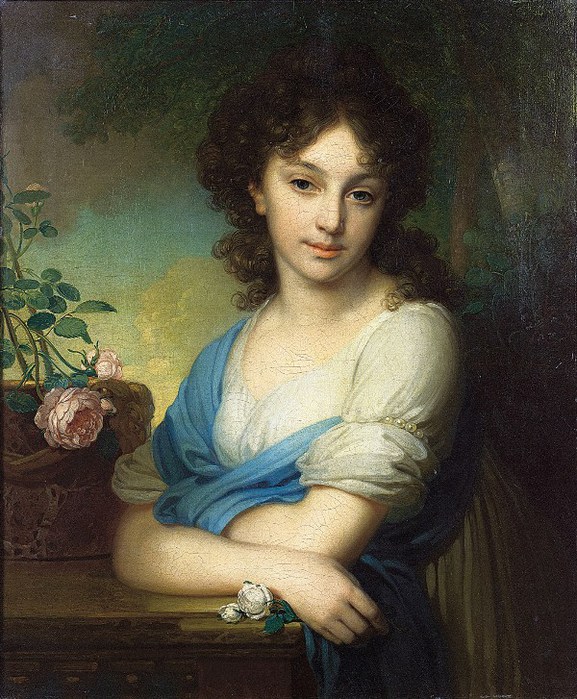 Naryshkina, by Golitsina’s husband, Elena Alexandrovna (1785-1855), in her first marriage, the Most Serene Princess of Italy, Countess Suvorova-Rymnikskaya; - maid of honor; daughter of A.L. Naryshkin and Maria Senyavina, granddaughter of the famous admiral A.N. Senyavin, sister of L.A. and K.A. Naryshkin; daughter-in-law of Generalissimo A.V. Suvorov, cousin of Count M.S. Vorontsov.
Naryshkina, by Golitsina’s husband, Elena Alexandrovna (1785-1855), in her first marriage, the Most Serene Princess of Italy, Countess Suvorova-Rymnikskaya; - maid of honor; daughter of A.L. Naryshkin and Maria Senyavina, granddaughter of the famous admiral A.N. Senyavin, sister of L.A. and K.A. Naryshkin; daughter-in-law of Generalissimo A.V. Suvorov, cousin of Count M.S. Vorontsov.
Artist V.L. Borovikovsky, 1799
 Orlova-Chesmenskaya, born. Lopukhina, Evdokia Nikolaevna (1761-1786) - wife of Count Alexei Grigorievich Orlov, mother of the maid of honor Anna Alekseevna Orlova.
Orlova-Chesmenskaya, born. Lopukhina, Evdokia Nikolaevna (1761-1786) - wife of Count Alexei Grigorievich Orlov, mother of the maid of honor Anna Alekseevna Orlova.
Artist Jean-Louis de Velli, c.1780s
 Orlova, born Zinovieva, Ekaterina Nikolaevna (1758-1781) - cousin and wife of the former favorite of Catherine II, Prince Grigory Orlov.
Orlova, born Zinovieva, Ekaterina Nikolaevna (1758-1781) - cousin and wife of the former favorite of Catherine II, Prince Grigory Orlov.
Artist Rokotov, Fedor Stepanovich
 Orlova-Chesmenskaya, Anna Alekseevna (1785-1848) - maid of honor, only daughter of Alexei Orlov, an associate of Empress Catherine II, and heir to his multimillion-dollar fortune.
Orlova-Chesmenskaya, Anna Alekseevna (1785-1848) - maid of honor, only daughter of Alexei Orlov, an associate of Empress Catherine II, and heir to his multimillion-dollar fortune.
Portrait by I.V. Bazhenov, 1838
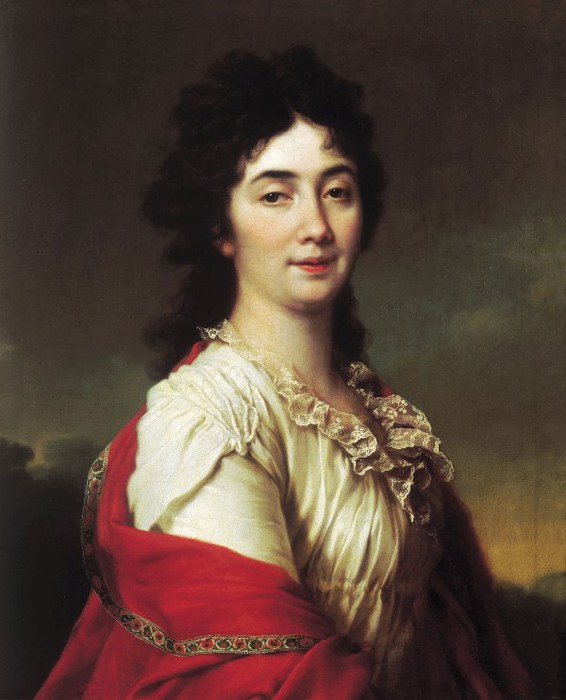 Protasova, Anna Stepanovna (1745-1826) - trusted lady-in-waiting of Catherine II.
Protasova, Anna Stepanovna (1745-1826) - trusted lady-in-waiting of Catherine II.
Portrait by D. G. Levitsky, around 1790s
 Pushkina-Dubelt, Natalya Alexandrovna, Countess Merenberg (1836-1913) - daughter of Alexander Sergeevich Pushkin, morganatic wife of Prince Nicholas-Wilhelm of Nassau.
Pushkina-Dubelt, Natalya Alexandrovna, Countess Merenberg (1836-1913) - daughter of Alexander Sergeevich Pushkin, morganatic wife of Prince Nicholas-Wilhelm of Nassau.
Artist I.K. Makarov, 1849
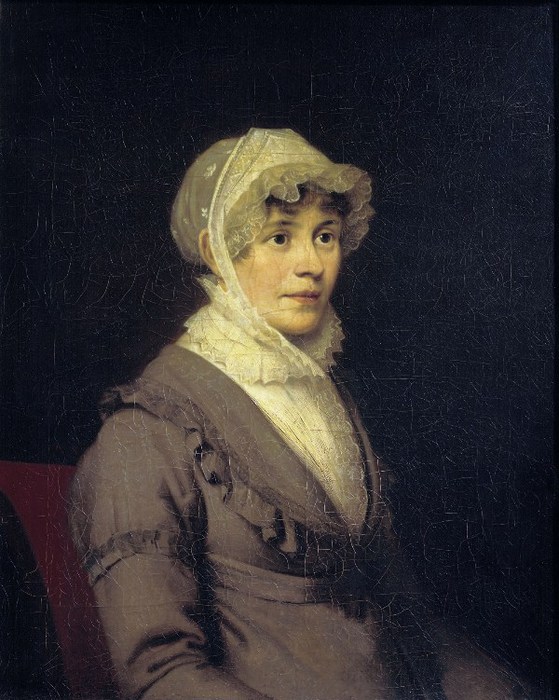 Rostopchina, born. Protasova, Ekaterina Petrovna (1776-1859) - maid of honor, author of several works of spiritual content; wife of Moscow Governor-General F.V. Rostopchin and mother of the writer Countess de Segur.
Rostopchina, born. Protasova, Ekaterina Petrovna (1776-1859) - maid of honor, author of several works of spiritual content; wife of Moscow Governor-General F.V. Rostopchin and mother of the writer Countess de Segur.
Portrait by Orest Kiprensky, 1809
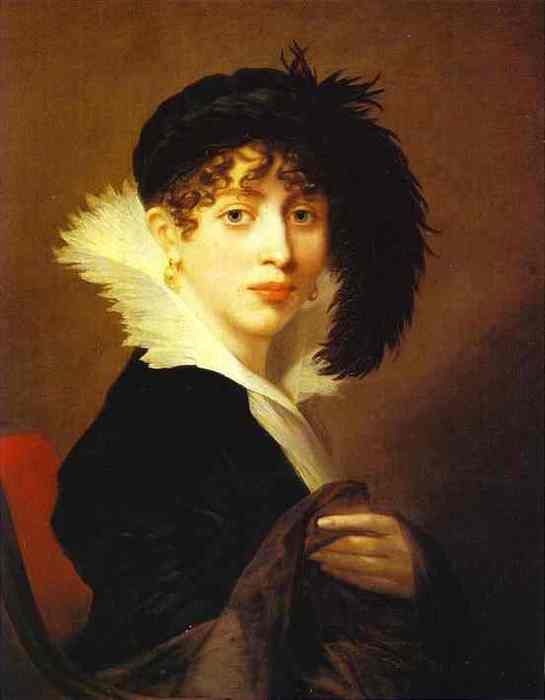 Stroganova, born. Golitsyna, Sofya Vladimirovna (1775-1845) - maid of honor to four empresses, the youngest daughter of the “mustachioed princess” N.P. Golitsyna, sister of the Moscow Governor-General Prince D.V. Golitsyn and State Lady E.V. Apraksina; wife of General Count P.A. Stroganov. She was very friendly with Empress Elizaveta Alekseevna.
Stroganova, born. Golitsyna, Sofya Vladimirovna (1775-1845) - maid of honor to four empresses, the youngest daughter of the “mustachioed princess” N.P. Golitsyna, sister of the Moscow Governor-General Prince D.V. Golitsyn and State Lady E.V. Apraksina; wife of General Count P.A. Stroganov. She was very friendly with Empress Elizaveta Alekseevna.
Artist Jean Laurent Monnier, 1808
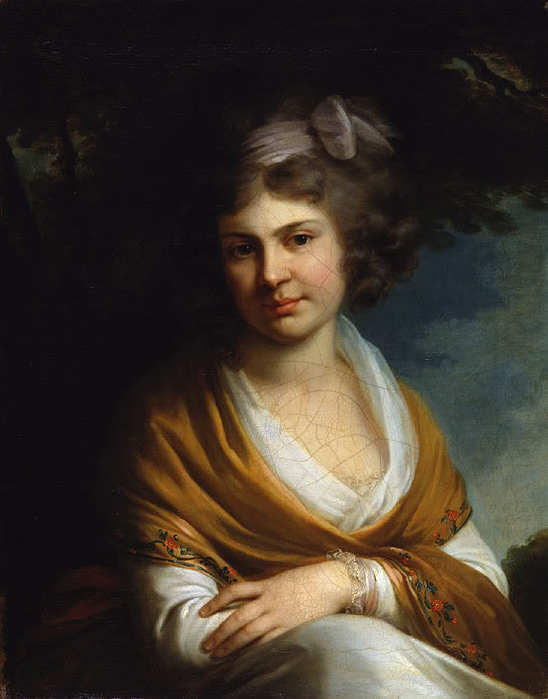 Zubova, born Suvorova, Natalya Alexandrovna (1775-1844) - the only daughter of Field Marshal Suvorov, who affectionately called her “Suvorochka”. Married to Nikolai Zubov, brother latest favorite Catherine II.
Zubova, born Suvorova, Natalya Alexandrovna (1775-1844) - the only daughter of Field Marshal Suvorov, who affectionately called her “Suvorochka”. Married to Nikolai Zubov, brother latest favorite Catherine II.
Artist V.L. Borovikovsky, 1795
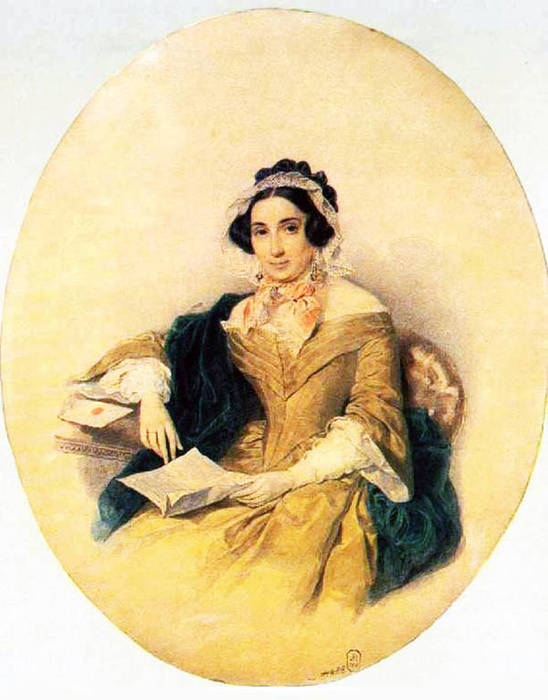 Fikelmon, born Countess Tizenhausen, Daria Fedorovna (1804-1863) - granddaughter of Field Marshal Kutuzov, daughter of E.M. Khitrovo, wife of the Austrian diplomat and politician K.L. Fikelmon. She is known as the hostess of the St. Petersburg salon and the author of a detailed “secular diary”, in the entries of which Pushkinists are especially interested in fragments relating to Pushkin and his wife, and a detailed report on the duel and death of Pushkin.
Fikelmon, born Countess Tizenhausen, Daria Fedorovna (1804-1863) - granddaughter of Field Marshal Kutuzov, daughter of E.M. Khitrovo, wife of the Austrian diplomat and politician K.L. Fikelmon. She is known as the hostess of the St. Petersburg salon and the author of a detailed “secular diary”, in the entries of which Pushkinists are especially interested in fragments relating to Pushkin and his wife, and a detailed report on the duel and death of Pushkin.
Watercolor by P.F. Sokolov, 1837
 Khitrovo, born Golenishcheva-Kutuzova, Elizaveta Mikhailovna (1783-1839), in her first marriage, Countess Tizengauzen, daughter of M.I. Kutuzov, friend of A.S. Pushkin. The owner of a famous St. Petersburg salon.
Khitrovo, born Golenishcheva-Kutuzova, Elizaveta Mikhailovna (1783-1839), in her first marriage, Countess Tizengauzen, daughter of M.I. Kutuzov, friend of A.S. Pushkin. The owner of a famous St. Petersburg salon.
Portrait of P.F. Sokolov, 1838
 Chernysheva, born. Rzhevskaya, Avdotya Ivanovna (1693-1747) - general’s wife, nicknamed “Avdotya Boy-Baba”, given to her by Peter I, one of Peter the Great’s mistresses, according to Vilboa, “her disorderly behavior had a harmful effect on Peter’s health”; mother of the Chernyshev brothers, prominent figures in the reign of Catherine II.
Chernysheva, born. Rzhevskaya, Avdotya Ivanovna (1693-1747) - general’s wife, nicknamed “Avdotya Boy-Baba”, given to her by Peter I, one of Peter the Great’s mistresses, according to Vilboa, “her disorderly behavior had a harmful effect on Peter’s health”; mother of the Chernyshev brothers, prominent figures in the reign of Catherine II.
Unknown artist XVIII century
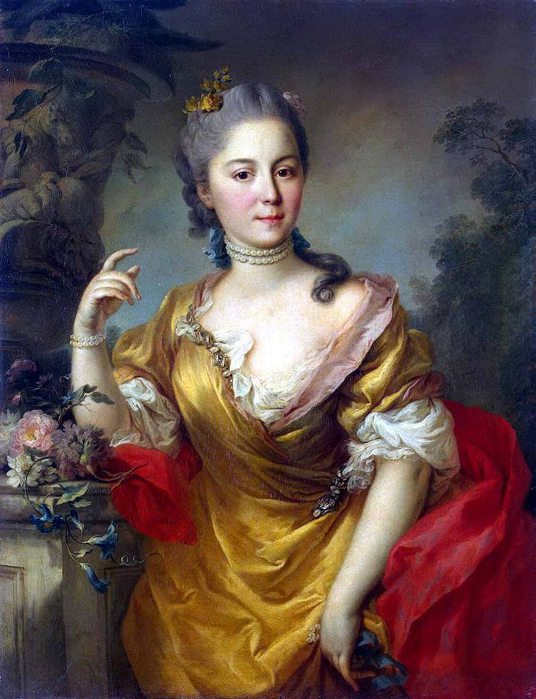 Chernysheva, born. Islenyeva, Anna Aleksandrovna (1740-1794) - relative (maternal) of Prince G.A. Potemkin, wife of Field Marshal General in the Fleet, President of the Admiralty Collegium Count Ivan Grigorievich Chernyshev.
Chernysheva, born. Islenyeva, Anna Aleksandrovna (1740-1794) - relative (maternal) of Prince G.A. Potemkin, wife of Field Marshal General in the Fleet, President of the Admiralty Collegium Count Ivan Grigorievich Chernyshev.
Artist S. Torelli, 1764
 Chernysheva, nee Ushakova, Ekaterina Andreevna (1715-1779) - maid of honor, daughter of Count A.I. Ushakov; half-sister of Field Marshal S.F. Apraksin; wife of the diplomat Count P.G. Chernyshev; mother of Countess D.P. Saltykova and Princess N.P. Golitsyna.
Chernysheva, nee Ushakova, Ekaterina Andreevna (1715-1779) - maid of honor, daughter of Count A.I. Ushakov; half-sister of Field Marshal S.F. Apraksin; wife of the diplomat Count P.G. Chernyshev; mother of Countess D.P. Saltykova and Princess N.P. Golitsyna.
Artist Alexander Roslin, 1776
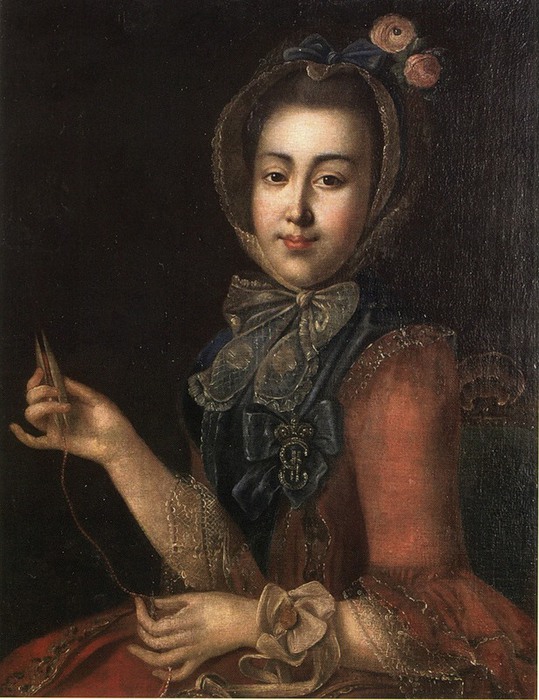 Sheremeteva, Anna Petrovna (1744-1768) - maid of honor, daughter of P.B. Sheremetev; bride of the mentor of the Grand Duke N.I. Panin.
Sheremeteva, Anna Petrovna (1744-1768) - maid of honor, daughter of P.B. Sheremetev; bride of the mentor of the Grand Duke N.I. Panin.
Artist I.P. Argunov, 1760s
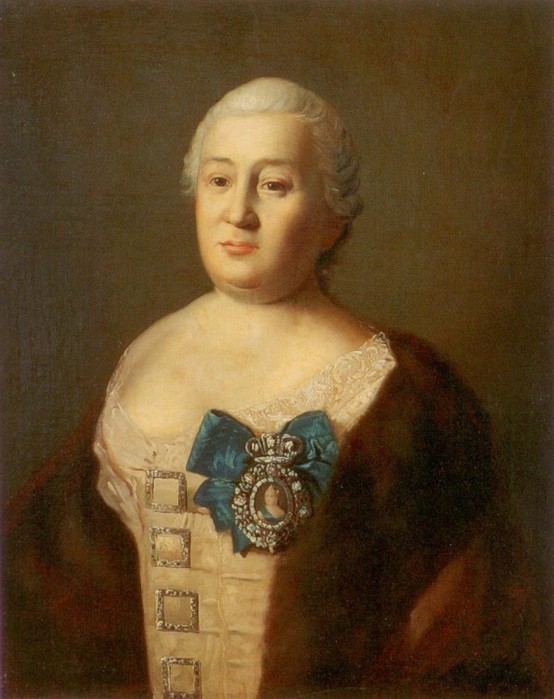 Shuvalova, born. Shepeleva, Mavra Egorovna (1708-1759) - Elizaveta Petrovna’s closest friend and state lady of her court, wife of Pyotr Ivanovich Shuvalov. It was her influence that the Shuvalov party owed its rise to.
Shuvalova, born. Shepeleva, Mavra Egorovna (1708-1759) - Elizaveta Petrovna’s closest friend and state lady of her court, wife of Pyotr Ivanovich Shuvalov. It was her influence that the Shuvalov party owed its rise to.
Portrait by Antropov, late 1750s
 Demidova-Karamzina, Aurora Karlovna (Eva Aurora Charlotte Shernval), 1808-1902, - public figure, maid of honor at the imperial court of Finland. Aurora Shernval and her sister Emilia (married Countess Musina-Pushkin) were considered one of the first St. Petersburg beauties.
Demidova-Karamzina, Aurora Karlovna (Eva Aurora Charlotte Shernval), 1808-1902, - public figure, maid of honor at the imperial court of Finland. Aurora Shernval and her sister Emilia (married Countess Musina-Pushkin) were considered one of the first St. Petersburg beauties.
Artist Bryullov K.P., 1837
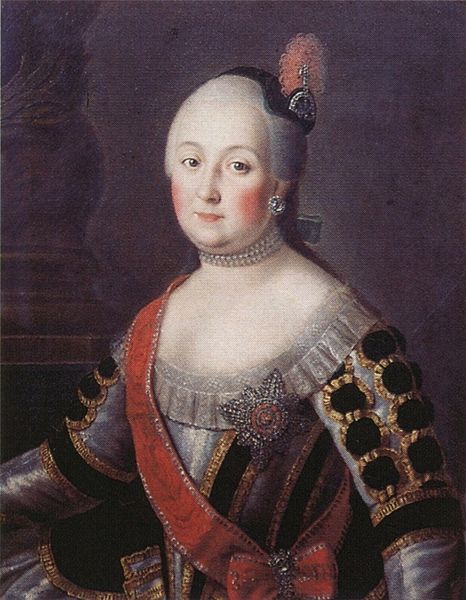 Vorontsova, born. Countess Skavronskaya, Anna Karlovna (1722-1776) - wife of Chancellor Count M.I. Vorontsov, cousin of Empress Elizabeth Petrovna, lady of state.
Vorontsova, born. Countess Skavronskaya, Anna Karlovna (1722-1776) - wife of Chancellor Count M.I. Vorontsov, cousin of Empress Elizabeth Petrovna, lady of state.
Artist A.P.Andropov, 1763
 Vorontsova, Ekaterina Semyonovna, married Lady Pembroke, (1783-1856) - maid of honor, daughter of Count S.R. Vorontsov, sister of Count M.S. Vorontsov, wife of Count Pembroke George Herbert.
Vorontsova, Ekaterina Semyonovna, married Lady Pembroke, (1783-1856) - maid of honor, daughter of Count S.R. Vorontsov, sister of Count M.S. Vorontsov, wife of Count Pembroke George Herbert.
Artist Henry Raeburn, 1810s
![]() Ganskaya Ewelina (Polish: Ewelina Hańska), née Countess Rzhewuska (1801-1882) - Polish landowner and Russian subject, wife of Honore de Balzac.
Ganskaya Ewelina (Polish: Ewelina Hańska), née Countess Rzhewuska (1801-1882) - Polish landowner and Russian subject, wife of Honore de Balzac.
Artist Ferdinand Georg Waldmüller, 1835
 Pototskaya, born Glyavone, Sofia Konstantinovna, in her first marriage was Witt, in her second - Pototskaya (1760-1822) - a Constantinople courtesan of Greek origin, according to one legend she was the Sultan's concubine, the concubine of many celebrities, a spy and adventuress, managed to become a Polish aristocrat (titled countess).
Pototskaya, born Glyavone, Sofia Konstantinovna, in her first marriage was Witt, in her second - Pototskaya (1760-1822) - a Constantinople courtesan of Greek origin, according to one legend she was the Sultan's concubine, the concubine of many celebrities, a spy and adventuress, managed to become a Polish aristocrat (titled countess).
Artist I.B. Lampi, 1790s
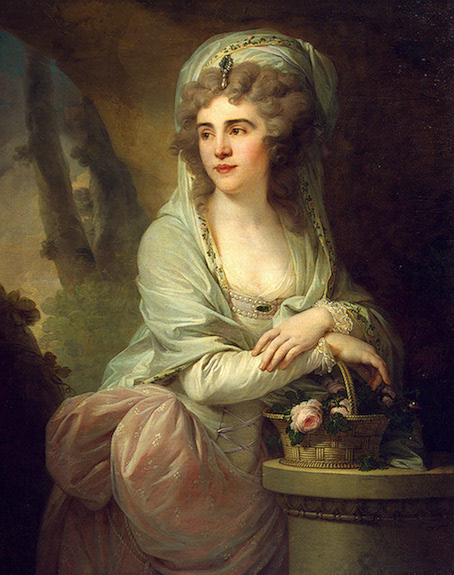 Samoilova, born. Trubetskaya, Ekaterina Sergeevna, (1763-1830) - maid of honor, wife of Prosecutor General A.N. Samoilov, sister of Prince V.S. Trubetskoy and Baroness A.S. Stroganova, mother of N.A. Samoilov and Countess S.A. Bobrinskaya, mother-in-law of Yu.P. Samoilova.
Samoilova, born. Trubetskaya, Ekaterina Sergeevna, (1763-1830) - maid of honor, wife of Prosecutor General A.N. Samoilov, sister of Prince V.S. Trubetskoy and Baroness A.S. Stroganova, mother of N.A. Samoilov and Countess S.A. Bobrinskaya, mother-in-law of Yu.P. Samoilova.
Artist I-B Lampi, 1792-1796
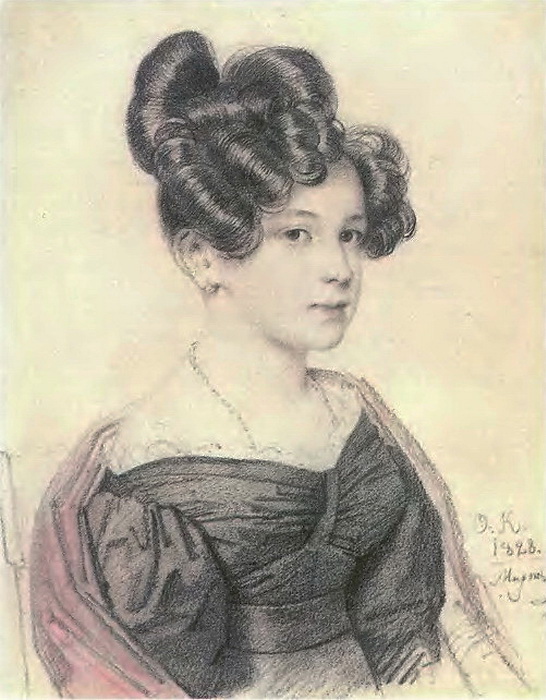 Andro, born Olenina, Anna Alekseevna (1808-1888) - daughter of the president of the St. Petersburg Academy of Arts, Alexei Olenin. Pushkin's beloved in 1828−29. Musician and singer. Author of hitherto unpublished diaries and memoirs about Pushkin. Wife of the Vice-President of Warsaw, Count F.A. Langeron.
Andro, born Olenina, Anna Alekseevna (1808-1888) - daughter of the president of the St. Petersburg Academy of Arts, Alexei Olenin. Pushkin's beloved in 1828−29. Musician and singer. Author of hitherto unpublished diaries and memoirs about Pushkin. Wife of the Vice-President of Warsaw, Count F.A. Langeron.
Portrait by O. Kiprensky, 1828
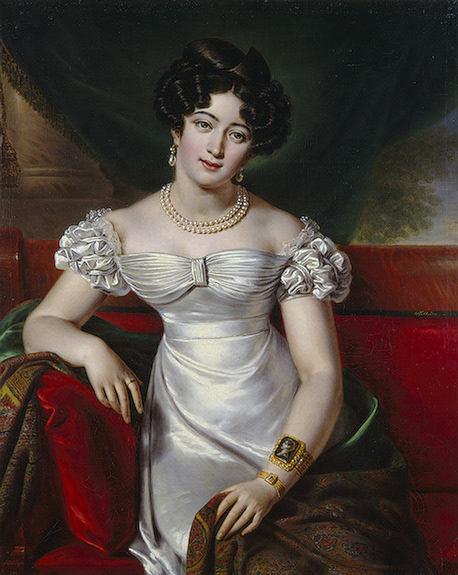 Samoilova, Yulia Pavlovna (1803-1875) - countess, daughter of General Palen and Maria Skavronskaya, maid of honor, famous for her relationship with the artist Karl Bryullov.
Samoilova, Yulia Pavlovna (1803-1875) - countess, daughter of General Palen and Maria Skavronskaya, maid of honor, famous for her relationship with the artist Karl Bryullov.
Artist B.Sh. Mituar, 1825
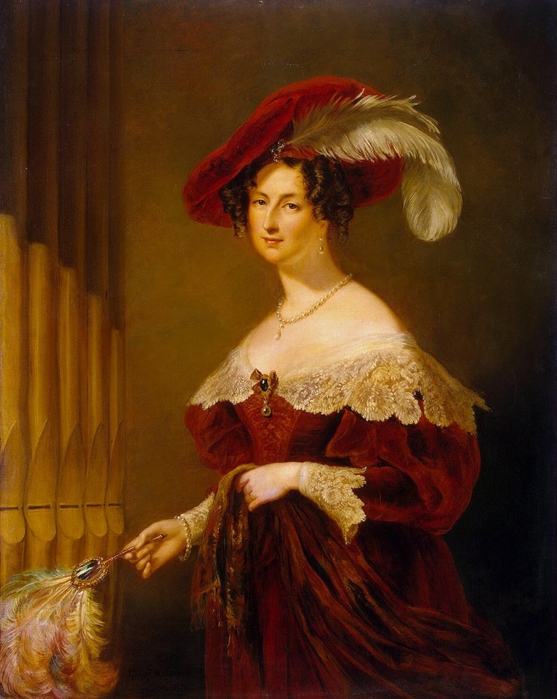 Vorontsova, born. Branitskaya, Elizata Ksaverevna (1792-1880) - His Serene Highness Princess, State Lady, Honorary Trustee in the Management of Women's educational institutions, maid of honor, cavalry lady of the Order of St. Catherine; recipient of many poems by A.S. Pushkin; wife of Novorossiysk Governor-General M.S. Vorontsov.
Vorontsova, born. Branitskaya, Elizata Ksaverevna (1792-1880) - His Serene Highness Princess, State Lady, Honorary Trustee in the Management of Women's educational institutions, maid of honor, cavalry lady of the Order of St. Catherine; recipient of many poems by A.S. Pushkin; wife of Novorossiysk Governor-General M.S. Vorontsov.
Artist Hayter George, 1839
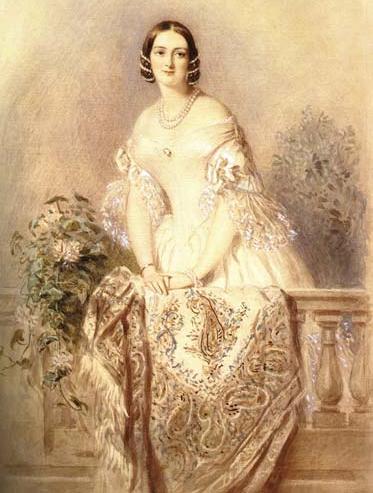
Zavadovskaya, born Vlodek, Elena Mikhailovna (1807-1874) - daughter of a cavalry general, adjutant general M.F. Vlodek, wife of the chief prosecutor of the Senate V.P. Zavadovsky. One of the most brilliant high-society beauties of Pushkin’s time, memories and letters of that era never ceased to repeat about her exceptional beauty; friend of M.Yu. Lermontov; A.S. Pushkin, I.I. Kozlov, P.A. Vyazemsky dedicated poems to her.
Artist Chalon Alfred Edward, watercolor, 1838 Your youth shines with beauty, You are given to hearts to love, Light, captivating, like joy, And like thoughtfulness, tender.
In a beautiful face. snow-white And in scarlet roses on the cheeks - Everywhere everything breathes with a tender heart. It is in the blue eyes, It is in the smile on the lips; And, like a ruddy dawn, the brilliance of the sun in a fiery stream Throws life into the heavens, - So your beauty is illuminated by a pure angelic soul... I.I. Kozlov (E.M. Zavadovskoy)
What I like about antique portraits is that you can read them, looking at them like a fascinating novel. Sometimes the whole life of a hero flashes before your eyes, when you see first a gentleman, then a lady, in an old dress. This is not surprising, because the attitude towards the image was different, not the same as now. Today we can take a photo of ourselves in the mirror, and within five minutes we can get likes. Then take pictures of your food, then of the cats, then, finally, of yourself again. Previously, over the course of his entire life, a person could become the owner of just one single image of his loved one. And only if you are very lucky and have the money to pay for it, because it cost a lot of money. The portrait was taken care of to show to children and grandchildren. Therefore, the requirements for the image were different. I had to fit my whole life, as much as possible, like a small story on a small piece of canvas. For posterity or just as a souvenir for yourself.
Wedding portraits were a special genre among portraits. They tried to capture young girls at their best, besides, as we know, there was a great chance that the current newlywed would not survive her first birth, and this portrait would be the only thing that would remain as a keepsake for her inconsolable relatives.
And so, before us is that same wedding portrait.
But he is very unusual. White wedding dress. Royal ermine robe. The bride's direct gaze, too direct for a timid maiden. And the virgin is clearly not a young girl, but rather a mature woman, having long said goodbye to her youth. Although the dress white means the marriage is the first. The hand with the ring as evidence of marriage is in the foreground, specially highlighted with a dark glove, like the ring box. “Look, everyone, I’m married.” At the same time, the face is too serious.
The portrait shows Anna Howard Weiss.
And the background to the painting of this wedding portrait is as follows:
Her parents were scions of the most noble houses in Great Britain, relatives of the royal house. Moreover, they are also fabulously rich heirs. The mother died shortly after giving birth. The father tried his luck in a new marriage, but he remained childless. And so, by the beginning of her marriageable age, Anna was a bride with a huge dowry, and in addition, the heiress of two noble families, to whom vast estates and large capital were supposed to go. In general, nothing foreshadowed that the young maiden would “stay too long,” and it would seem that a girl with such introductory data could not avoid getting married.
But the caring father set out to find Anna a truly worthy groom, and not just a hunter for a rich dowry. There were enough people who wanted to, but not one was recognized by the father as noble enough, rich enough, or possessing all human virtues, because he was the only one worthy to become the husband of his only daughter and heiress
The search for candidates went on and on. Marriage proposals came and came, but all were met with a stern refusal from the father, concerned about the future of his daughter. The selection of candidates dragged on indecently. Or rather pUntil poor Anna turned 34 years old. This was at a time when a girl of 25 years old, unmarried, could already be considered an old maid, and catch the sympathetic glances of more successful peers. And even if she was ten times richer than them, for them she was still a poor thing who did not get married on time. Anna wanted a family with a husband and children, but she seriously believed that her father would never find her a worthy husband according to all the signs and she would die alone.
However, a miracle happened. And when Anna was 34, Colonel Gordon, who was only 2 years older than the bride, and quite noble and rich, wooed her. And the father, who of course had to be persuaded by numerous aunties, finally agreed. He was still scared that he might be left without grandchildren if he continued to search for a good husband.
This portrait was painted at the time when Anna’s fate was finally decided, and she finally got married. The portrait painter was ordered to paint it so that all viewers could see - in front of them is the highest aristocracy, relatives of the king) although Anna is somehow not at all happy about this fact, as well as about her long wait
True, married life did not last long. Having become pregnant 4 years after the wedding with a long-awaited child, she died during childbirth at 38 years old. Her son survived and became a fairly famous scientist. And this fact, in general, somehow brightens up this sad story.


